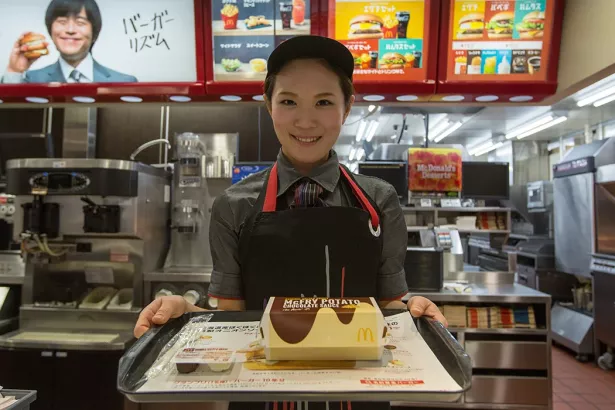The connection between globalization and McDonald’s is a tale of scholarly metonymy. There’s no textual shortage of evidence that references the now-global fast food chain’s success in other countries, often linking it to themes of self-sufficiency, post-industrial stability, and democracy-formed capitalism.
Among these chunks of research is a more endogenous angle that examines the impact McDonald’s has had within offshore cultures; namely, how the American fast food model has been diffused across different countries. Such case studies, which look at individual cultural phenomena and their direct applications to globalization activity, refines not only the framework of McDonald’s in theories, but overall globalization processes and strategies as well.
Japan’s stylish renditions of fast food practices, for one, existed long before McDonald’s came to the country. Given the existing popularity of convenient and on-the-go meals—including conveyor belt sushi and street vendor meals—American fast food chains were bound to succeed. Scholars John W. Traphagan and L. Keith Brown investigate this supposition by employing an ethnographic model of research, building the argument that Japan not only assimilated—but basically swallowed whole—the McDonald’s dining model, to the point that younger people especially believe McDonald’s is a Japanese company.
Traphagan and Brown emphasize that, rather than “styles of preparation or ingredients,” fast food is defined by “a style of selling food.” Essentially, McDonald’s brought no real paradigm shifts to Japan—but rather constructed a space in which already-formed Japanese cultural practices could continue.
Their case study contrasts with that of geographers Ray Oldakowski and John McEwen, who similarly investigate McDonald’s and its cultural assimilation—but in Ecuador. Their evidence shows that the integration of American fast food dining followed a different path, and McDonald’s remains an obviously foreign establishment in the cityscape. McDonald’s didn’t attempt to adapt to Japanese or Ecuadorian culture (for McDonald’s, “the strategy has been one of consistency, i.e. McDonald’s prefers not to change its way of doing business to adapt to foreign cultures, rather, it changes local cultures to meet its own needs,” they note), but Ecuadorians clearly viewed the fast food chain as a deviation from local tastes, unlike Japanese consumers.
“ comparison of exterior designs revealed that the McDonald’s in Guayaquil were very similar to the typical McDonald’s restaurants in the United States,” write the authors. Moreover, the menus were also similar. Only 2 percent of those polled considered the food served at McDonald’s similar to Ecuadorian food. In contrast, very few interviewees considered Kentucky Fried Chicken—another American fast food establishment—different from Ecuadorian food. Eighty-four percent reported that KFC was the most similar to Ecuadorian food, and 68 percent said it was actually where they dined regularly.
“Those results suggest that McDonald’s might gain new customers, and more visits from existing customers, if they also offered menu items more typical of Ecuadorian food,” conclude the authors.
In neither Japan nor Ecuador did McDonald’s actively work to adapt itself to the tastes of the host countries, but the depth of integration into local dining customs differed between the two nations. Such observations could prompt additional nation-specific analyses and possibly reveal additional adaptations to the “strategy of consistency” associated with McDonald’s. However, the study of the globalization of fast food from a micro-cultural angle requires challenging assumptive attitudes around American businesses and classical theories, with one of the most popular—and infamously controvertible—examples being the Golden Arches Theory of Conflict Prevention, built on tropes of democratic peace through development. Globalization and its effects could also be examined in light of McDonald’s cultural impacts on its origin country of America, opening a conversation on socio-economics and class.
Resources
JSTOR is a digital library for scholars, researchers, and students. JSTOR Daily readers can access the original research behind our articles for free on JSTOR.
Fast Food and Intergenerational Commensality in Japan: New Styles and Old Patterns
By: John W. Traphagan and L. Keith Brown
Ethnology, Vol. 41, No. 2 (Spring 2002), pp. 119–134
University of Pittsburgh- Of the Commonwealth System of Higher Education
The Diffusion of American Fast Food to Ecuador
By: Ray Oldakowski and John McEwen
Material Culture, Vol. 42, No. 2 (Fall 2010), pp. 28–49
International Society for Landscape, Place & Material Culture
Fast Food: Oppression through Poor Nutrition
By: Andrea Freeman
California Law Review, Vol. 95, No. 6 (December 2007), pp. 2221–2259
California Law Review, Inc.


Spread the word